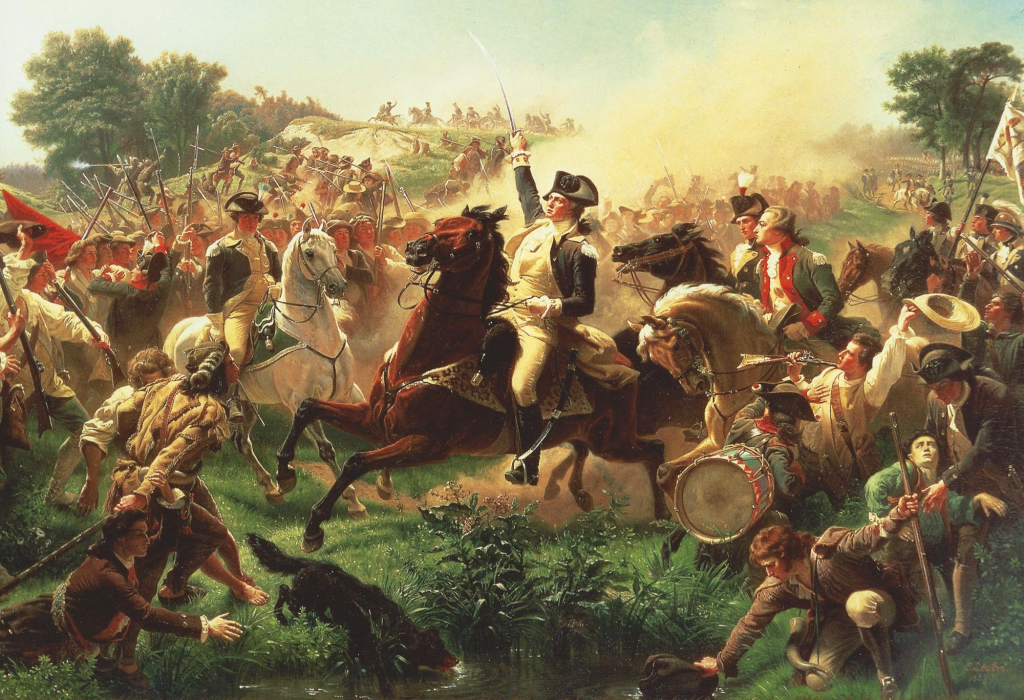When we think of George Washington, we often picture the stoic, unflappable leader who led America to victory against all odds. But in the fall of 1776, Washington was anything but invincible. In fact, his decisions during the defense of New York City nearly spelled the end of the American Revolution before it had truly begun. From the disastrous Battle of Brooklyn Heights to the humiliating loss of Fort Washington, Washington’s missteps in New York serve as a stark reminder that even the greatest leaders are human—and sometimes, they make really bad calls.

The British Are Coming (Again)
By August 1776, the British had regrouped after their retreat from Boston and set their sights on New York City. Under the command of General William Howe, a massive force of over 32,000 British and Hessian troops descended upon Staten Island, supported by a fleet of 400 ships. Their goal was clear: crush the rebellion by seizing New York, the strategic and symbolic heart of the colonies.
Washington, meanwhile, faced an impossible task. His army of roughly 19,000 men was outnumbered, outgunned, and outclassed. New York City, surrounded by water on all sides, was a logistical nightmare to defend. Even Charles Lee, one of Washington’s top generals, had warned that holding New York was a lost cause. But Washington couldn’t just abandon the city—politically and symbolically, it was too important. So, against his better judgment, he divided his forces between Manhattan and Long Island, stretching his already thin resources even thinner.
The Battle of Brooklyn Heights: A Costly Mistake
The British struck on August 27, 1776, at the Battle of Brooklyn Heights. General Howe executed a brilliant flanking maneuver, catching the Continental Army completely by surprise. Outflanked and outmaneuvered, the Americans suffered heavy casualties. Washington’s army was pushed back to Brooklyn Heights, where they were trapped with their backs to the East River. It was a dire situation, but Washington managed to pull off a miraculous nighttime evacuation, saving his army from certain destruction.
The Fall of New York: One Disaster After Another
Despite the narrow escape at Brooklyn Heights, Washington’s troubles were far from over. In September, the British launched a two-pronged attack on Manhattan. On September 15, British forces landed at Kips Bay, where they encountered little resistance from the inexperienced Connecticut militia. The Americans fled in panic, and Washington, witnessing the chaos, reportedly threw his hat to the ground in frustration, shouting, “Are these the men with which I am to defend America?”
The British quickly took control of lower Manhattan, and Washington was forced to retreat north to Harlem Heights. There, on September 16, the Continental Army scored a small but morale-boosting victory, repelling a British advance. However, this minor success did little to change the overall situation. By October, the British had pushed Washington’s army further north, and the Americans were forced to abandon Manhattan entirely.
The Disaster at Fort Washington
Washington’s next major mistake came in November, when he decided to hold Fort Washington, a key defensive position on the northern end of Manhattan. Despite warnings from generals like Charles Lee and Nathanael Greene, Washington believed the fort could be defended. This decision proved disastrous.
On November 16, 1776, the British launched a full-scale assault on Fort Washington. Outnumbered and outgunned, the American defenders were quickly overwhelmed. The fort fell, and nearly 3,000 Continental soldiers were captured. Many of these prisoners would later die in horrific conditions aboard British prison ships. The loss of Fort Washington was a crushing blow to the American cause, and Washington was devastated. Witnessing the surrender from across the Hudson River, he reportedly “wept like a child.”
Lessons Learned: From Defeat to Redemption
The fall of New York was a series of painful lessons for Washington. His indecision, inexperience, and overconfidence had cost the Continental Army dearly. But even in the face of these failures, Washington began to show the qualities that would eventually make him a great leader. He took responsibility for his mistakes, learned from them, and adapted his strategies.
One of the most important lessons Washington learned was the value of trusted advisors. Nathanael Greene, despite his role in the Fort Washington debacle, remained one of Washington’s most loyal and capable generals. Greene would go on to play a crucial role in the Southern Campaign, helping to turn the tide of the war.
The Legacy of New York: A Turning Point
The fall of New York was a low point for the American Revolution, but it was also a turning point. Washington’s ability to learn from his mistakes and adapt his strategies would prove crucial in the years to come. The hard lessons of 1776 laid the groundwork for future victories at Trenton, Princeton, and ultimately, Yorktown.
Today, the story of Washington’s struggles in New York serves as a reminder that even the greatest leaders are not immune to failure. What sets them apart is their ability to rise from defeat, learn from their mistakes, and keep fighting for what they believe in. So, the next time you’re facing a tough situation, remember Washington in 1776. If he could bounce back from a series of disastrous defeats, surely you can handle whatever life throws your way.
Conclusion: From the Ashes of Defeat
The fall of New York was a dark chapter in the American Revolution, but it was also a crucible that forged Washington into the leader he needed to be. His ability to learn from his mistakes, adapt his strategies, and inspire his men would ultimately lead to victory. The story of New York is a testament to the resilience and determination that define the American spirit—a spirit that continues to inspire us today.

No comments yet.